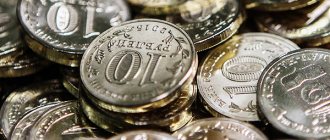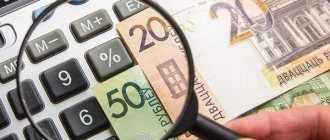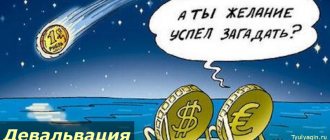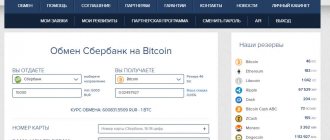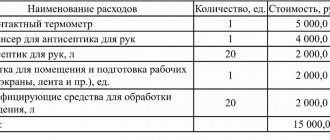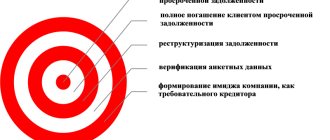Experts predicted the ruble exchange rate by the end of 2020
Well
The ruble is falling against the dollar and the euro, which reached 75.85 rubles on September 3. and 89.58 rub. respectively. The national currency remains unstable, however, according to analysts’ forecasts, there is a chance that in the near future the ruble will strengthen and eventually stabilize by the end of the year.
The situation for the market rate is determined and will be determined in the coming months mainly by external factors, Alexander Osin, an analyst at the management of trading operations on the Russian stock market at Freedom Finance, told Gazeta.Ru. He explains this by the fact that the Russian economy is standing still - broad programs for its development are not applied, a number of medium-term factors unfavorable for accelerating the economy remain, such as an increase in VAT, an increase in the retirement age, etc., so there is nothing that could have a strong impact for the course. The key factors supporting demand in the economy in the financial and currency markets of the Russian Federation are external in nature, notes Osin.
According to the analyst,
The main influence on the exchange rate will be the OPEC production limit of 6-10% of average annual demand, as well as the situation in the largest countries.
For example, measures to stimulate the economy in the USA, China and Japan amount to about 8% of GDP, which seems to be a fairly strong indicator given the quarantine restrictions on the economy. Osin notes that
Already at the moment, key segments of the US economy have largely recovered from the shock, and real retail sales in July exceeded the pre-crisis level.
“Judging by the latest information from the US Treasury, a round of “targeted” industry support for demand is beginning in America. This indicates that the monetary stimulus measures implemented this year are assessed by US regulators as sufficient and successful, which will reduce deflationary fears of the market and prevent the formation of sustainable demand for “quality,” the analyst says, adding that similar measures to support demand implemented in the other two largest economies - Japanese and Chinese.
At the same time, the expert warns that there are significant risks that exist regardless of decisions aimed at stimulating demand, and indirectly have a negative impact on the activity of global recovery, prices of financial and commodity assets, and exchange rates of developing countries, including the ruble. These risks are primarily associated with non-market regulation of processes both in the real economy and in the market for financial and commodity derivatives, explains Osin. Another significant medium-term risk for the Russian currency is the weakness of national measures to support economic demand. The specialist draws attention to the Moscow Exchange index, which has gained 16% since March, while stock indices in the USA, China, Japan, and South Korea have grown by 23-35%.
Artem Deev, head of the analytical department at AMarkets, believes that oil will have the most significant impact on the ruble in the near future. The market is now very volatile, and the exchange rate of the domestic currency is primarily reflected in oil prices
, which depend on the relationship between supply and demand in the market. The expert recalls that
Since the beginning of the pandemic, business activity has decreased in many countries around the world, factories have stopped working (or are not operating at full capacity), air travel has been reduced to a minimum - this means that oil consumption has decreased, as has its price, and demand will recover as Borders will open.
“For now, the ruble is under pressure from a lot of negative factors in the form of weak oil and possible sanctions from the EU and the US. They do not allow the ruble to strengthen to 70 against the dollar, but there are not enough factors for the collapse of the national currency. If the situation neither changes positively nor worsens, the ruble will trade in the range of 73-77 against the dollar, 88-91 against the euro,” the expert predicts.
At the moment, there is a correction of trends formed under the influence of anti-crisis measures and against the backdrop of a reduction in measures to suppress demand within the framework of quarantine restrictions, says Alexander Osin. According to his estimates, in the current situation, based on semi-annual assessments of the dynamics of financial and commodity markets and comparative indicators of the monetary policy of the Federal Reserve and the Bank of Russia, with a probability of 60% one can expect that the rates at the end of the year will be in the range of 65.80 - 76.65 ruble and 71.80 - 89 rubles per US dollar and euro, respectively.
Financial analyst Jean-Paul Churkin points out that the second half of the year is always the traditional season for the dollar to appreciate, and the higher the rate, the more ruble money goes to exporters. And this is money for taxes, which help investors participate in various programs for development and production, he explains. According to the expert’s forecast, it is most likely that the dollar will continue to strengthen and the Russian currency will weaken, since it is comfortable for the budget for the dollar to cost 75-76 rubles.
If we talk about buying foreign currency, it is now profitable only within the framework of short-term speculative transactions in essence - for example, within the framework of a weekly trend, which is still negative for the ruble exchange rate, notes Churkin. Artem Deev, in turn, advises those who have them to diversify their savings so that the crisis does not bring large losses.
“However, you need to understand that if you buy currency with your last money, which you will urgently need for purchases and household needs, then there is a high risk of losing when exchanging for rubles if the rates change. It is worth setting aside an amount in dollars for travel, large purchases in American currency, training and vacations - distribute in advance how long you will need dollars, and buy certain amounts from your salary,”
- the expert recommends.
At the same time, Alexander Osin does not rule out that, based on the estimates presented above, the dollar and euro have already largely recouped with growth the potential for their strengthening against the ruble, which was laid down under the influence of factors negative for the restoration of demand for risk. In this regard, with a probability of about 60%, we can expect a final stabilization or strengthening of the ruble exchange rate against the dollar and euro relative to their current levels in the future before the end of the year, the expert summarizes.
Expert: the ruble does not have enough strength to move below 74.5
The past week turned out to be quite difficult for the Russian currency. Against the background of falling oil prices and negative external rhetoric, the ruble again tried to actively weaken. On Friday, September 18, the dollar exchange rate exceeded 75.5, the euro exchange rate approached 90. At the same time, as Otkritie Broker’s leading global research analyst Andrey Kochetkov notes, high demand at OFZ auctions and the return of oil to growth give hopes for the implementation of a more optimistic scenario.
The expert explains that the ruble will continue to experience the strongest pressure from foreign policy risks. However, the content of statements in Europe is still gradually reduced to regular lists of personalities, which in general is not of great importance for the ruble. Accordingly, we can expect that the ruble will begin to reflect market realities and economic trends in its dynamics.
“First of all, it is worth paying attention to oil, which in mid-September was under pressure from the risks of a weak recovery in demand and a fall in discipline in OPEC+. A meeting of the parties to the agreement on September 17 showed that the fulfillment of obligations was at a high level, and the violators of discipline were subjected to pressure and promised to fulfill their obligations, bringing production to the required volumes,” Andrei Kochetkov comments on the news of the dollar exchange rate.
The second wave of coronavirus has become a reality in a number of countries, but it is also worth noting the absence of strict quarantine measures. Accordingly, the recovery in demand may slow down, but it is unlikely that the market will experience a failure similar to the spring one.
The Otkritie Broker analyst also draws attention to the high demand for OFZ placements. If in August auctions were held in small volumes, and in some cases did not even take place, then in September the Ministry of Finance increased the premium, which played a positive role. Accordingly, the combination of a weak ruble and high yields served to return investors to the Russian debt market.
As for the dollar exchange rate forecast, all risks for the ruble remain in the coming week.
“Can we just say that sentiment in oil has improved a little and this factor will not put pressure on the Russian currency for now. In technical terms, an increase in the dollar exchange rate to 76.0 encounters market resistance, but the ruble does not yet have enough strength to move below 74.5. Accordingly, the likelihood of trading in this range in the coming week remains high until foreign policy risks become clearer. However, this area is always ready to bring surprises, especially since the next presidential election is in full swing in the United States, and the use of aggressive rhetoric against the most likely external opponents is a tradition of American domestic policy,” this is the dollar exchange rate forecast from Andrei Kochetkov.
Exchange Rates
Exchange rates for tomorrow: The Central Bank promises growth of the ruble
Exchange rates today: the dollar is growing, the euro is declining
Expert: The Ministry of Finance will begin to smooth out fluctuations in the ruble exchange rate
Exchange rates for tomorrow: dollar and euro will become cheaper
All
The euro and dollar continue to grow: the expert named the reasons for the failure of the ruble
On Monday, during trading on the Moscow Exchange, the dollar exchange rate exceeded 90 rubles. Why does the ruble continue to fall while the currency continues to rise in price? Is it worth buying foreign money now or waiting for another moment? How much will the dollar be worth by the end of September? Viktor Kasyanov, vice president, head of the treasury department at Renaissance Credit, answered these questions exclusively :
The dynamics of the ruble exchange rate have been truly dramatic this year. Having lost a third of its value against the dollar by March 18 due to the collapse of markets due to the pandemic, the ruble managed to win back most of the fall after 3 months. However, the favorable period for the ruble quickly ended, and the rate of the Russian currency against the dollar began to rapidly approach the annual and absolute maximum on the interbank market - 80.9292.
The reason for the ruble's failure is obvious - continuing low energy prices. Although oil prices have recovered most of their value since the beginning of the year, oil exports from Russia have recovered very slowly.
The Russian oil sector is bound by an agreement to reduce OPEC+ production. According to the Ministry of Energy, export volumes in August amounted to 4.24 million barrels per day, which is 23.7% less than a year ago.
Press service of Renaissance Credit
Foreign exchange earnings remain low, sharply worsening the country's balance of payments. The current account (expanded exports) fell to $600 million in the second quarter of 2020, from $9.9 billion in the second quarter of 2020.
The fall in the trade balance was also facilitated by an increase in imports due to pent-up demand after the lifting of quarantine restrictions. Weak exports are affecting budgets at all levels. Before the crisis, the share of oil and gas revenues in the consolidated budget was about 50%.
The shortfall in raw material revenues has a catastrophic impact on the budget, the deficit of which reached 1.5 trillion rubles by the end of July.
Press service of Renaissance Credit
Obviously, the weakening of the ruble, in addition to being fundamentally justified, is also beneficial for the Ministry of Finance. The ten percent devaluation of the ruble in the second quarter brought the budget about 600 billion rubles of additional revenue.
To be fair, we note that the ruble is not the worst currency among developing countries, but entering the top ten outsiders is not very pleasant.
Press service of Renaissance Credit
The impressive accumulated reserves in the National Wealth Fund ($176.6 billion) contribute to the smaller decline in the Russian currency.
The Bank of Russia is trying to smooth out fluctuations by selling foreign currency on the domestic market (about $40 million daily). This explains the drop in the correlation between the ruble and oil since February of this year.
In addition, the state of Russia's balance of payments is improving due to the influx of non-resident funds into federal loan bonds. To cover the deficit, the Ministry of Finance is actively borrowing on the domestic market, which was attractive to global funds due to the increased differential in dollar and ruble rates. But after the Bank of Russia’s latest reduction of the key rate to a historical low of 4.25%, the attractiveness of the government securities market began to decline.
Press service of Renaissance Credit
The speech of US Federal Reserve Chairman Jerome Powell last week temporarily supported the currencies of developing countries, including the ruble, but not for long. All the optimism of investors in Russian assets was offset by negative events related to geopolitics.
Based on the analysis of the data presented, we predict that the ruble will continue the process of gradual weakening from current levels. At the end of September we see a level of 76 rubles per dollar. At the end of this year, the ruble exchange rate will approach 80 rubles per dollar, with the main movement taking place in October-November. A more significant devaluation will cause opposition from the Ministry of Finance and the Bank of Russia. Although targeting the exchange rate is no longer the goal of the regulator, a very weak ruble can cause an increase in consumer prices, which are precisely the object of monetary policy.

